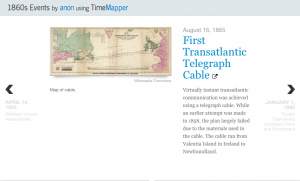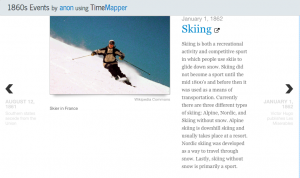Personally, I think the relationship between ideas and modes of representation is very confusing. But visual modes of representation do help to clarify events in time.
For example, in class we made timelines of our lives and then our days. It was really interesting to see what you remember, but also helps to have it all mapped out on a timeline to clearly see the chronology of important events in time. “For Christians, getting chronology right was the key to many practical matters such as knowing when to celebrate Easter and weighty ones such a knowing when the Apocalypse was nigh.” (Grafton, pg 11) It’s not just important for ordinary people to use chronology to remember information, it can also help with dating significant events in time. However, in historical times there was no exact chronological order of every event that occurred. So people had to use visual modes of representation to get an accurate timeline of events. “Still, experiments continued. Some were graphic, like the effort to lay out all the main historical events on a calendar that stretched not from the Creation or Abraham to the present but from January 1 to December 31, with important events in the past stacked up day by day, through the year.” (Grafton, pg 17).
It’s interesting to think about how time played out for Linn in his diary. It was also fascinating to see how really significant events in history occurred in the same years as Linn’s diary, so while the Civil War was going on. For example, who knew that the first transantlantic telegraph cable was used during the same decade as the Civil War was taking place. However, this would not have been as simple if we did not have the technology we possess today. It definitely made studying and comparing historical events easier and more accessible to the public. Although it is very eminent, we must remember that “Though technology plays an important role in our story, it doesn’t drive it.” (page 15) It was especially interesting that Linn did not mention any important historical events that occurred outside his life in the Civil War. For example, skiing was invented in the same winter when Linn was writing in his diary. Although he did not have the Internet or any technology that would have allowed him to gain access quickly, I assume that word of a new sport like skiing would have been spread about in the United States as well, but there was no mention of skiing or any important event that occurred outside of his immediate realm.
not mention any important historical events that occurred outside his life in the Civil War. For example, skiing was invented in the same winter when Linn was writing in his diary. Although he did not have the Internet or any technology that would have allowed him to gain access quickly, I assume that word of a new sport like skiing would have been spread about in the United States as well, but there was no mention of skiing or any important event that occurred outside of his immediate realm.
